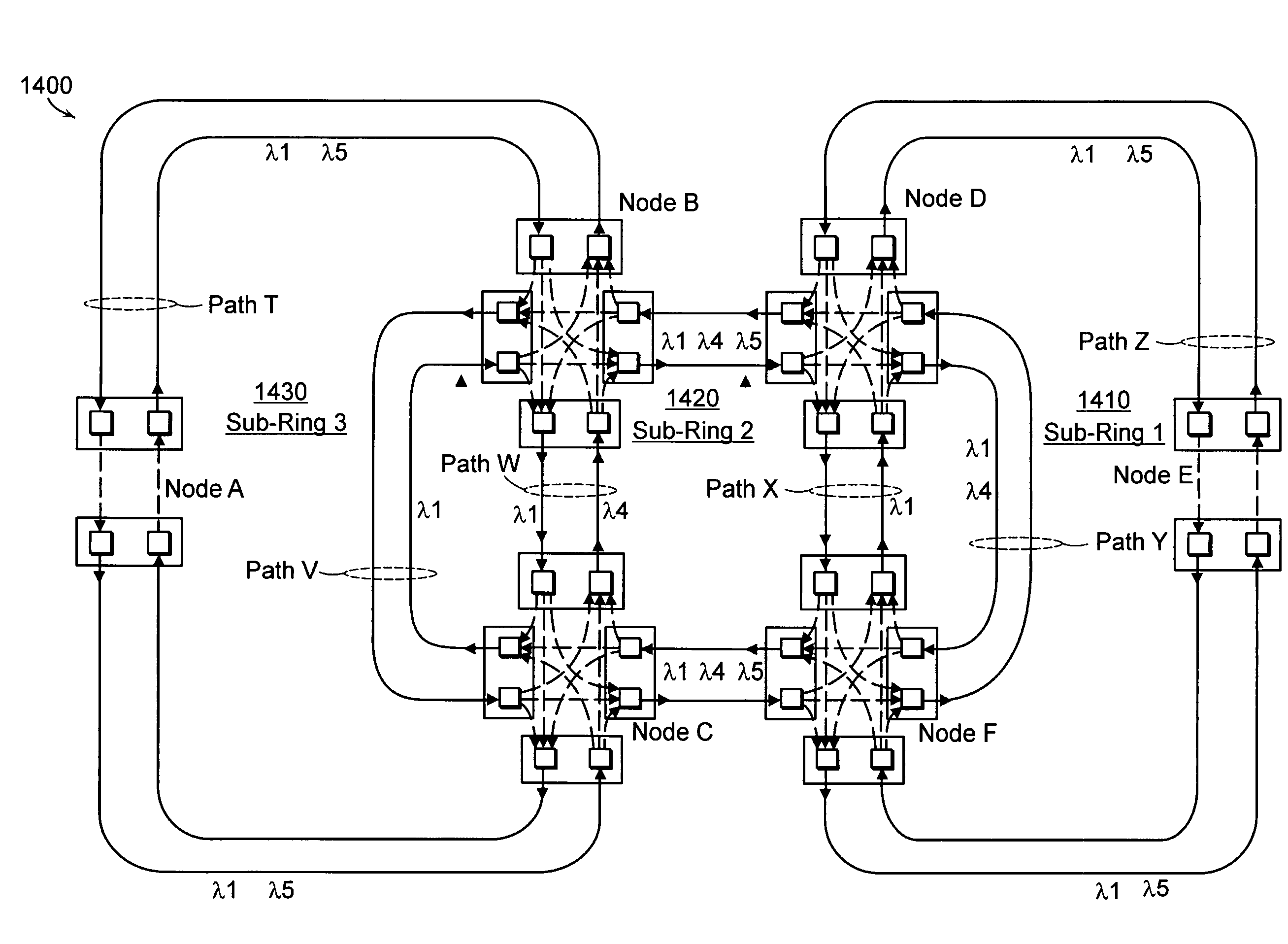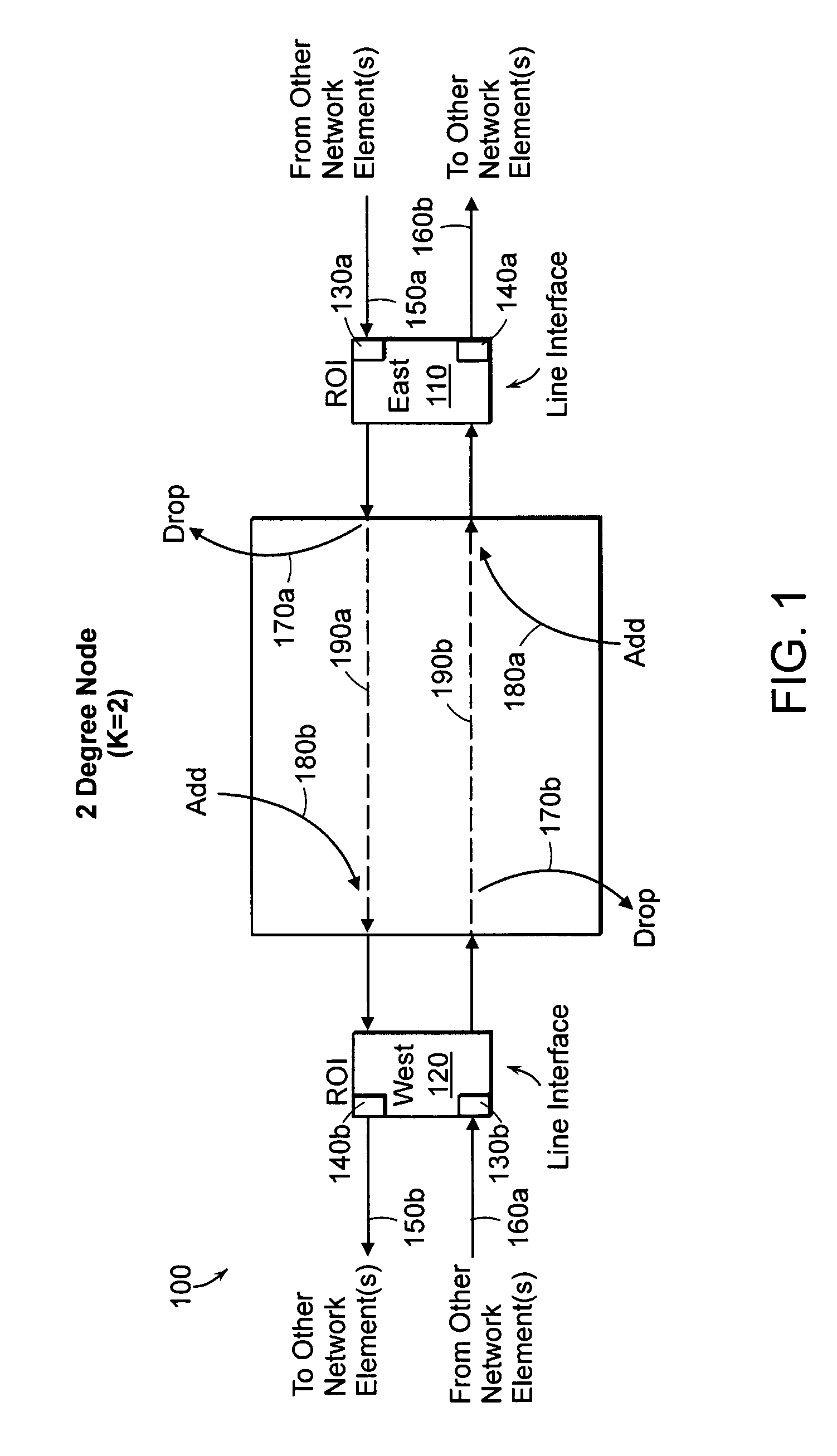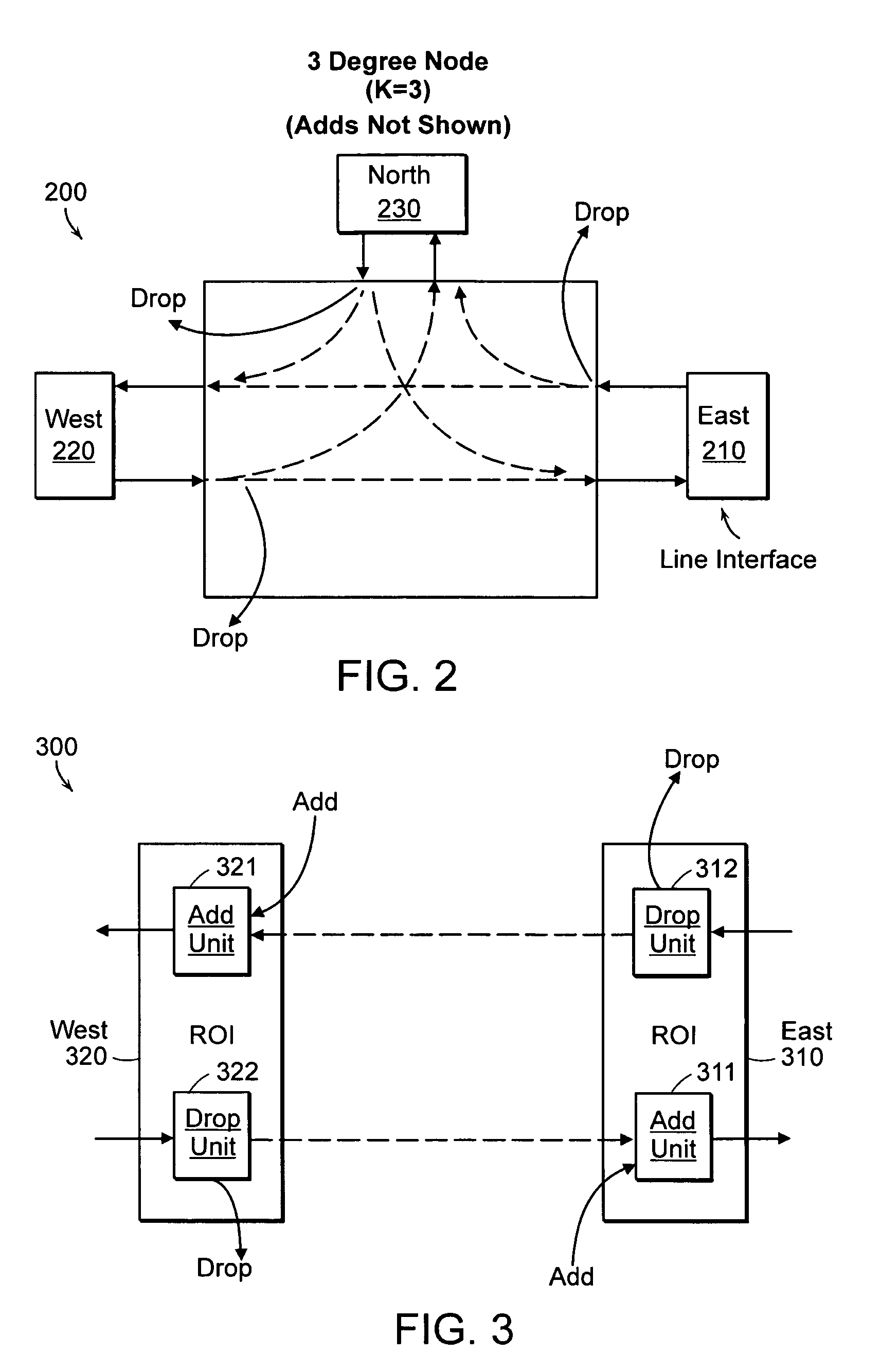System and method for re-using wavelengths in an optical network
a wavelength and optical network technology, applied in the field of wavelength reusing systems and methods in optical networks, can solve the problems that the working wavelength and the protection wavelength cannot be used to establish any additional connections between any other two nodes, and achieve the effect of reducing the number of wavelengths used
- Summary
- Abstract
- Description
- Claims
- Application Information
AI Technical Summary
Benefits of technology
Problems solved by technology
Method used
Image
Examples
Embodiment Construction
[0024]A description of preferred embodiments of the invention follows.
[0025]According to some embodiments of the present invention, a total number of wavelengths used in a WDM network may be reduced by designing a network using multi-degree nodes that form multiple sub-networks. Isolated sub-networks that do not share common network paths may reuse the same wavelengths used for communications within the other sub-networks.
[0026]An embodiment of the present invention includes a network, or corresponding method, with at least four network nodes that are each coupled to at least three network paths. At least two of the at least three network paths couple the network nodes. The network also includes at least two sub-networks that each include at least two of the network nodes and use at least one wavelength in common with the other sub-network.
[0027]The sub-networks may use at least one wavelength, in addition to the at least one wavelength in common, that supports communications betwee...
PUM
 Login to View More
Login to View More Abstract
Description
Claims
Application Information
 Login to View More
Login to View More - R&D
- Intellectual Property
- Life Sciences
- Materials
- Tech Scout
- Unparalleled Data Quality
- Higher Quality Content
- 60% Fewer Hallucinations
Browse by: Latest US Patents, China's latest patents, Technical Efficacy Thesaurus, Application Domain, Technology Topic, Popular Technical Reports.
© 2025 PatSnap. All rights reserved.Legal|Privacy policy|Modern Slavery Act Transparency Statement|Sitemap|About US| Contact US: help@patsnap.com



